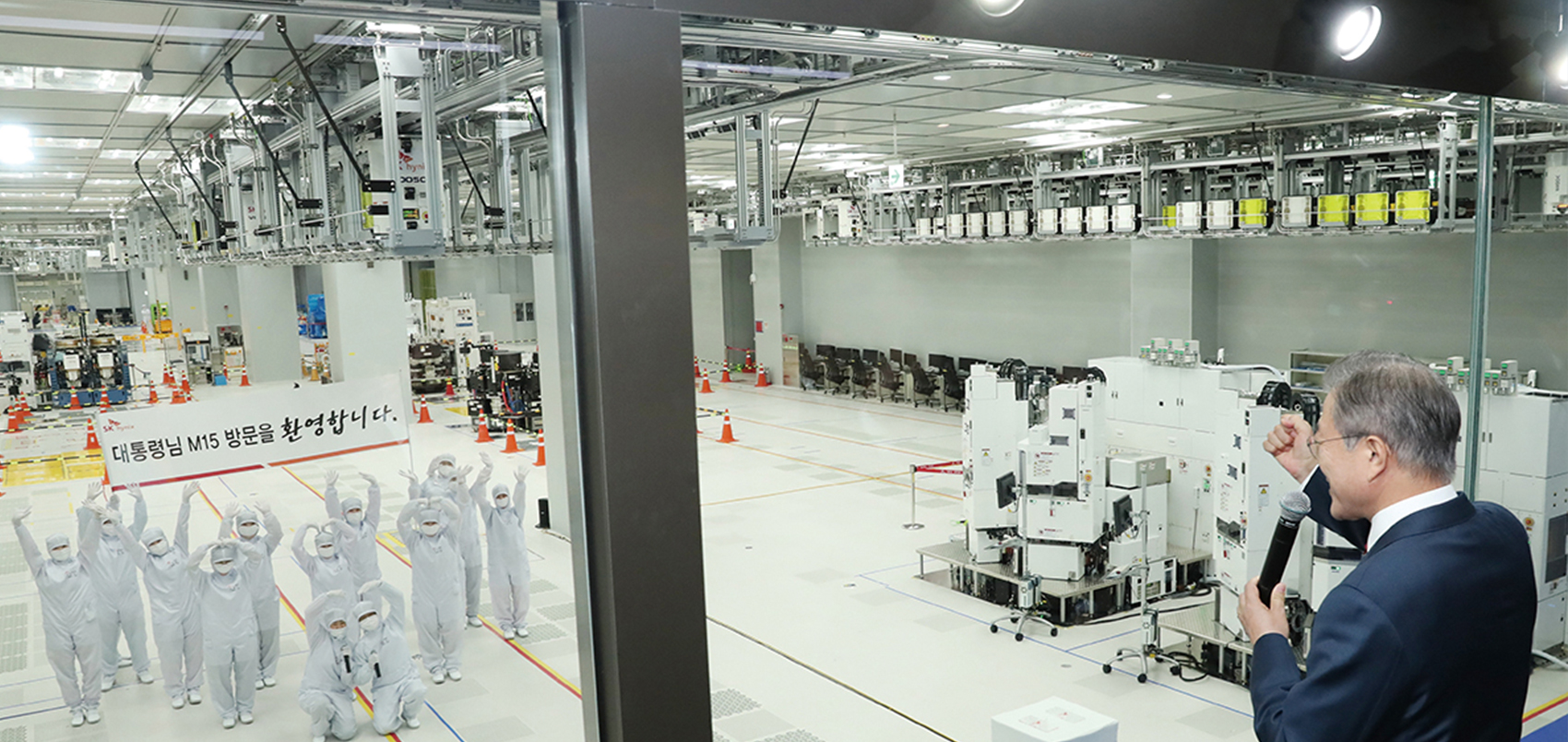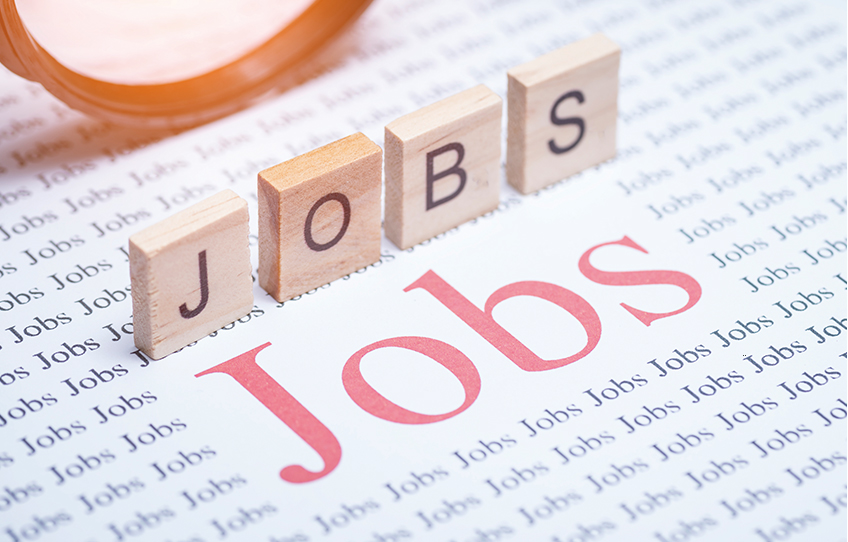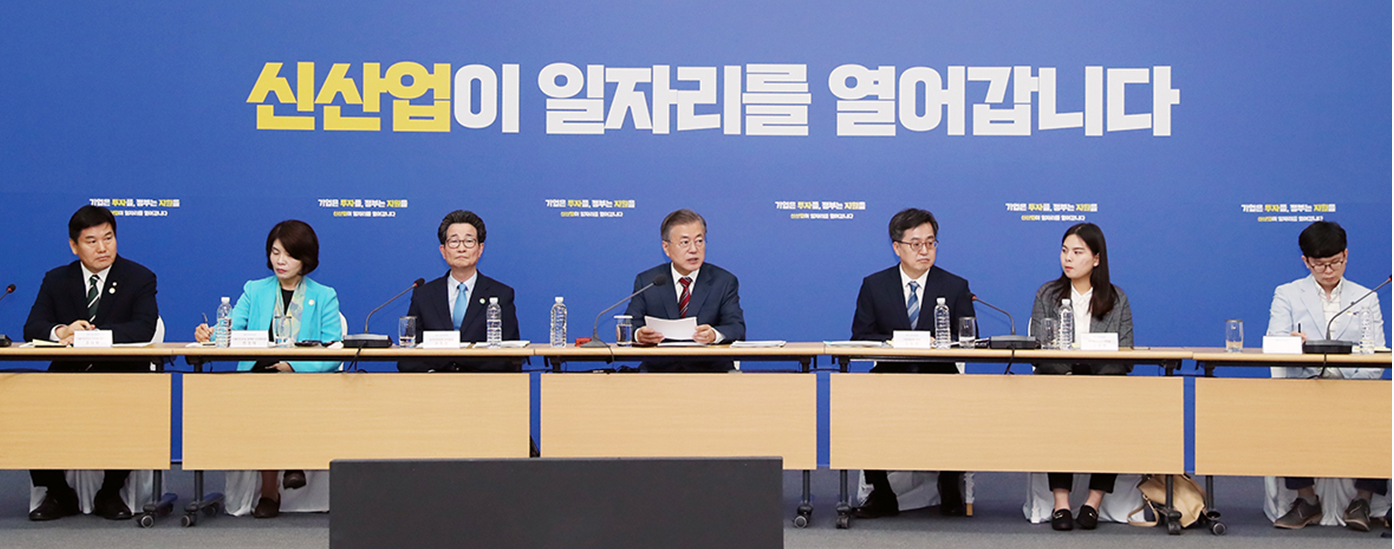
Contents





A Magician Who Works Miracles






‘Coexistence’ as the Key to More Jobs
The Korean government endeavors to establish an industrial ecosystem where businesses of all sizes co-exist and mutually.
Written by Sohn Ji-ae Photos courtesy of Cheong Wa Dae
 President Moon Jae-in gives words of encouragement to employees at a newly-opened SK hynix semiconductor facility in Cheongju, Chungcheongnam-do Province on Oct. 4.
President Moon Jae-in gives words of encouragement to employees at a newly-opened SK hynix semiconductor facility in Cheongju, Chungcheongnam-do Province on Oct. 4.An Environment of Coexistence
As a gloomy outlook for the national job market seems to have no sign of ending, what the Moon Jae-in administration has come up with to address the unemployment crisis is to create an economic ecosystem where both large and smaller companies, as well as the government and corporate entities, coexist.
To create such an environment of coexistence, the government acknowledges the need to increase cooperation with businesses, especially large corporations in the manufacturing industry, which drive most of the nation’s economy, and, also, to boost the partnership between large and smaller-sized businesses.
The government calls for businesses to “play a leading role in creating jobs by making investments,” instead of pursuing government-driven investments as it has done over the past year. Meanwhile, the government serves as what it calls a “support tower” to back up the private investments.
That’s why the latest eighth meeting of the Presidential Commission on Job Creation, presided over by President Moon Jae-in, took place on Oct. 4 at a new production facility of SK hynix, one of the world’s leading chipmakers, based in Cheongju, Chungcheongnam-do Province. This signals a shift in the government’s economic policy toward pursuing more corporate-friendly strategies, as an effort to boost the staggering job situation.
 The Korean government makes all-out efforts with a set of new strategies to address the worsening unemployment crisis. © shutterstock
The Korean government makes all-out efforts with a set of new strategies to address the worsening unemployment crisis. © shutterstockCompany Investments, Closer
Business-to-Business Partnership
At the meeting focused on jobs, President Moon said “It’s companies that actually bring quality jobs, in the end.” The government will spare no effort to overcome the worsening unemployment rate by revitalizing companies and encouraging them to make more investments and create more jobs, the president said.
According to the job commission, the government has pursued more than 140 public-private projects over the past year, mainly, aimed at fostering new growth engines with high potential of jobs, especially in five major sectors: future automobiles, semiconductors, Internet of Things (IoT) appliances, energy and bio-health industries. As a result of this government-to-business cooperation, corporations are expected to invest up to KRW 125 trillion to create more than 100,000 new jobs by 2020.
The government also calls for large companies to engage more in helping smaller-sized players to secure competitiveness in the market both at home and abroad. In particular, those conglomerates in the semiconductor industry, one of the nation’s driving forces that posted record sales by exporting USD 61.2 billion in the first half of the year alone, are urged to share their massproducing skills with smaller businesses. In addition, the so-called “Co-existing Funds,” worth approximately KRW 1.4 trillion, will be raised to fund technology development, facility expansion and required goods for smaller firms.
 The eighth meeting of the Presidential Commission on Job Creation is focused on how to make more jobs, as it is presided by President Moon Jae-in (center) at a new production facilty of SK hynic in Cheong ju, Chungcheongnam-do Province on Oct. 4.
The eighth meeting of the Presidential Commission on Job Creation is focused on how to make more jobs, as it is presided by President Moon Jae-in (center) at a new production facilty of SK hynic in Cheong ju, Chungcheongnam-do Province on Oct. 4.The nation’s leading IT companies armed with rich skills and manpower will allow small and mid-sized businesses to have access to their patents or IoT platforms, while fostering startups or engaging them in joint research and development projects. This move—investing and sharing by large companies—is seen by the government as a win-win strategy for businesses: improving the quality of products for conglomerates themselves and, at the same time, helping smaller companies gain a competitive edge. The government assumes this will naturally lead to more jobs.
A New Approach Required for More Jobs
It’s true that the industrial landscape has been transforming in the era of the Fourth Industrial Revolution, in the advent of factory automation and unmanned technologies leading to “growth without employment.” Actually, the government acknowledged that it had failed to come up with proper job strategies that meet the needs of this fast-changing world.
In order to ease this jobless state, the government recently applied desperate remedies: urging state firms to hire more part-time workers. This actually led to creating more jobs, according to the September job statistics. However, many critics see this plan as a stopgap measure that cannot solve job problems that the nation has long struggled to pull through.
The government needs a long-term strategy. To this, it needs more cooperation with leading actors in the economy. Conglomerates, like SK hynix and Samsung, must join forces and give smaller firms more opportunities to stand up and thrive in the markets as well.
This virtuous circle is the way to go for the sake of economic growth and more jobs. In this sense, the path that the government is now taking toward “an ecosystem of coexistence” seems to be in the right direction.
 The Korean government sees a co-existing environment where big and smaller companies work together and prosper together as a win-win strategy for businesses and for national economy as well. © shutterstock
The Korean government sees a co-existing environment where big and smaller companies work together and prosper together as a win-win strategy for businesses and for national economy as well. © shutterstockOther Articles





A Magician Who Works Miracles





Application of subscription
Sign upReaders’ Comments
GoThe event winners
Go


 November 2018
November 2018


